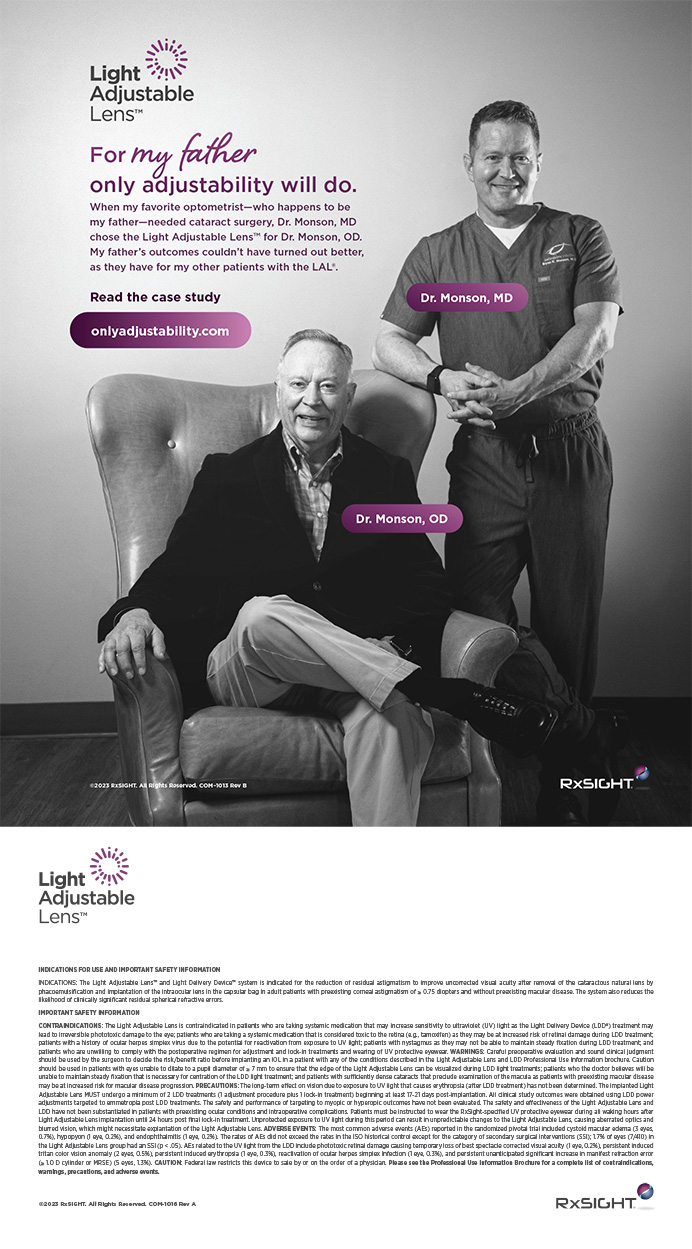Between December 2003 and April 2004, my colleagues and I diagnosed nine cases of infectious endophthalmitis following cataract surgery in our practice. Although we thoroughly investigated all of our procedures and the off-site facility where our instruments are sterilized, we could not determine the cause of this high number of cases in such a short period of time. The surgical cases infected were those of six surgeons of all grades of seniority. They used topical, sub-Tenon's, and peribulbar anesthesia, and they performed both temporal and superior clear corneal incisions. This article discusses the issues we identified as possible culprits of the outbreak and how we altered our practice to prevent the incidence of infectious endophthalmitis after future cataract surgeries. INVESTIGATION AND SOLUTIONS Disposable Instruments Disinfecting the Wound Preoperatively Dosed Ocular Medications Intracameral Cefuroxime CONCLUSION Our training unit has five consultants and two associate specialists performing cataract surgery as well as a changing population of five residents in training. Since adopting the new regimen, there have been 15 different operating residents. All surgeons perform clear corneal incisions, albeit with varying skill levels and wound architecture. The incidence of posterior capsular rupture, which is often considered a risk factor for infectious endophthalmitis, has varied between 1 for consultants to 5 for the most junior trainees. Since May 2004, my colleagues and I have performed more than 7,500 cataract procedures. Our incidence of endophthalmitis is less than 0.013, much lower than that reported by Montan et al1 (20 out of 32,180 patients or 0.06). In the recently published ESCRS endophthalmitis study,2 the arm using intracameral cefuroxime had an incidence of five out of 6,836 patients (0.073). In two recent reports of surgery during which intracameral cefuroxime was not utilized, endophthalmitis occurred in 43 out of 8,736 (0.49) patients and 44 out of 12,362 (0.36) patients.3,4 Of course, my colleagues and I cannot say for certain that intracameral cefuroxime has contributed to our low incidence of endophthalmitis after cataract surgery. In light of the Swedish and ESCRS data, however, we believe that surgeons should consider intracameral cefuroxime along with the other measures mentioned herein to minimize postoperative infection. Richard B. Packard, MD, FRCS, FRCOphth, is a Consultant Ophthalmic Surgeon at the Prince Charles Eye Unit in Windsor, UK. He acknowledged no financial interest in the products or companies mentioned herein. Dr. Packard may be reached at 44 1753 860441; eyequack@vossnet.co.uk. |
Up Front | Apr 2007
Prophylaxis With Intracameral Cefuroxime
In my experience, this drug has prevented the incidence of infectious endophthalmitis after cataract surgery.
Richard B. Packard, MD, FRCS, FRCOphth


